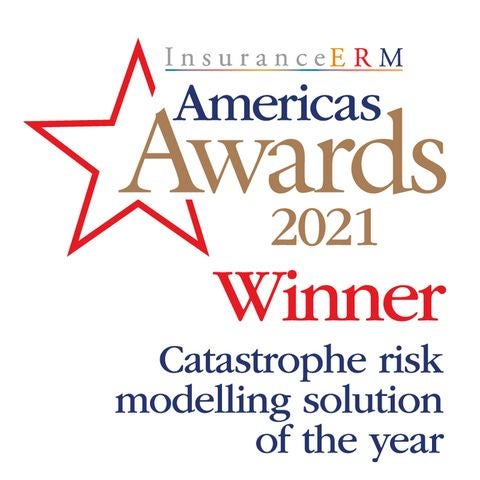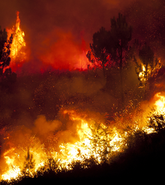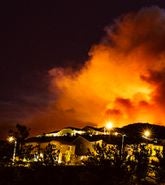It is a great honor to receive the InsuranceERM 2021 Americas Award for Catastrophe Risk Modeling Solution of the Year for our RMS® North America Wildfire HD Model. I would like to thank the judges for selecting our entry.
This model is a great example of how RMS works together with the market, scientific groups, and stakeholders such as regulators to provide solutions that can help (re)insurers move forward with a challenging issue. Last year saw another record-breaking California wildfire season in terms of acres burned. The August Complex Fire in Northern California became the first “gigafire,” with over a million acres burned in a single event. This comes on top of the costly seasons of 2017 and 2018. Wildfire was previously viewed as generating attritional losses that could be covered by earnings, but now we know that wildfire can easily produce solvency-challenging events.

How does the industry cope with a growing risk? Urban conflagration events driven by embers, such as Northern California’s Coffey Park in 2017 and Paradise in 2018, had shaken the market. (Re)insurers were being held back without adequate tools to cope with a rapidly changing risk environment, relying on a patchwork of hazard maps, simple models based primarily on fuel availability, and a historical record that did not account for the dramatic rise in wildfire activity.
New Approach to Wildfire Risk Modeling
RMS recognized that a completely different approach was required to get the comprehensive modeling solution that would meet the needs of the industry. The RMS U.S. Wildfire HD Model, introduced last year, covers all contiguous states across the U.S., and a recent launch this year has seen the addition of Canada for coast-to-coast modeling coverage.
With the ability to capture the widest possible range of scenarios, probabilistic modeling was required to accommodate tail risk events, such as Coffey Park and Paradise. The high-definition model framework takes advantage of the computational scale, speed, and capacity of the open risk analytics platform, Risk Intelligence™. The model simulates over 50,000 years of possible wildfire events and analyzes all parameters, such as surface fuel, topography, and weather conditions through to fire suppression techniques. Examining smoke, embers, and risk of urban conflagration, it offers (re)insurers standardized risk metrics and loss costs for an individual location through to portfolio level.
RMS modeling gives (re)insurers the opportunity to take control and understand their portfolio risk at a location level. By examining historical footprints, adjusting parameters, and assessing potential urban conflagration hotspots, they can manage wildfire risk with a much greater level of sophistication and price risk much more effectively. But with one record-breaking season after another, all stakeholders want to reduce the risk before it becomes largely unmanageable. Mitigation offers a solution.
Building in Wildfire Risk Mitigation
When developing the model, RMS understood that incorporating mitigation measures would provide a route for risk reduction. How did homes that were miles away from the fire footprint, such as with the Camp Fire in 2018, then ignite and cause an urban conflagration that could destroy an entire town? Through our partnership with the Insurance Institute for Business and Home Safety (IBHS), we had seen the devastation caused by embers to a house built at their test facility in South Carolina. Using this research, the RMS wildfire model accounts for wind-driven embers and the materials in and around a structure that can ignite and cause spread.
Homes continue to be built farther into the wildland-urban interface (WUI) and are much closer to trees and vegetation, and as mentioned previously, embers driven by strong winds can rain down on communities some miles away from the main fire. Recent RMS research with the IBHS, together with the National Association of Insurance Commissioners Center for Policy Research, explores whether mitigation measures taken by property owners can be incentivized through lower premiums.
The new RMS wildfire model accommodates many mitigation modifiers, such as non-flammable roofing materials and a clear perimeter around a property. The research looked at different locations across the western U.S. to see if mitigation actions are economically worth the effort and cost. The results are encouraging. Incentivizing effective wildfire mitigation measures offers a route for (re)insurers to look at keeping premiums affordable as well as reduce the chance of a catastrophic event.
RMS is working together with the insurance industry to encourage more effective modeling using modern probabilistic techniques that can accommodate what is a very different picture from 10 or 20 years ago, and to assess what future changes could be. We are also working to help with risk reduction as a route to temper the escalating risk of fire.
With this award and recognition from InsuranceERM for our wildfire modeling efforts, we are reassured that the industry supports our continuing endeavors.









